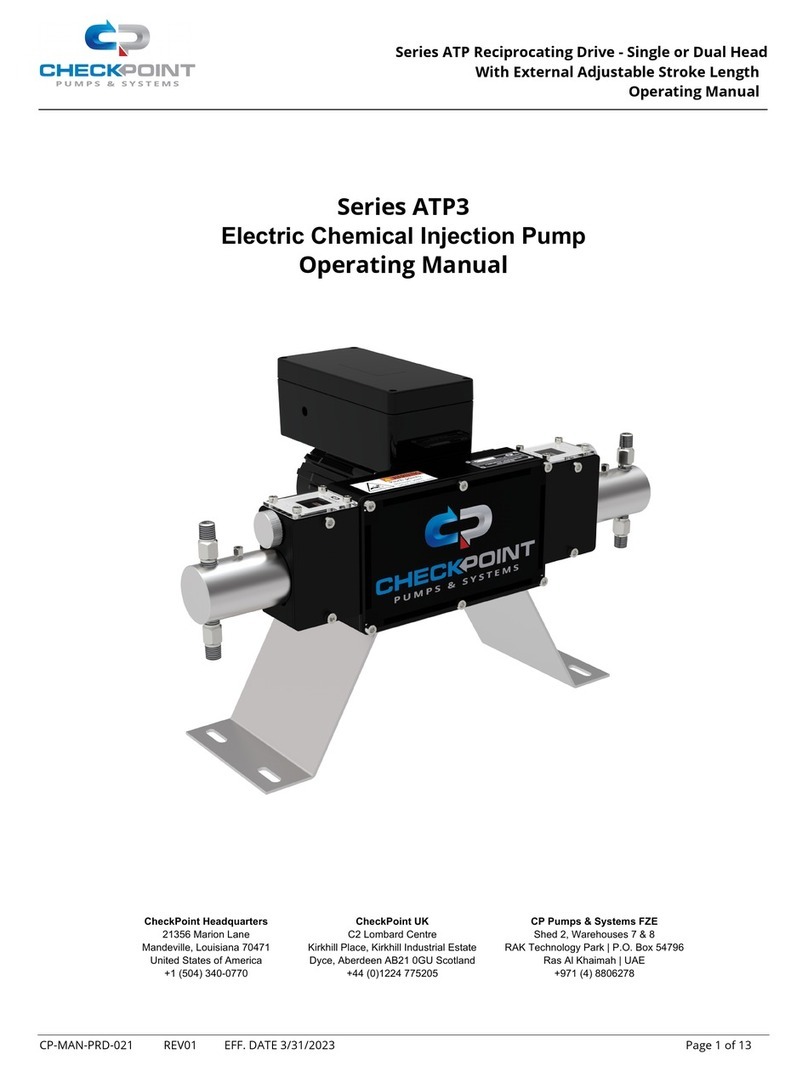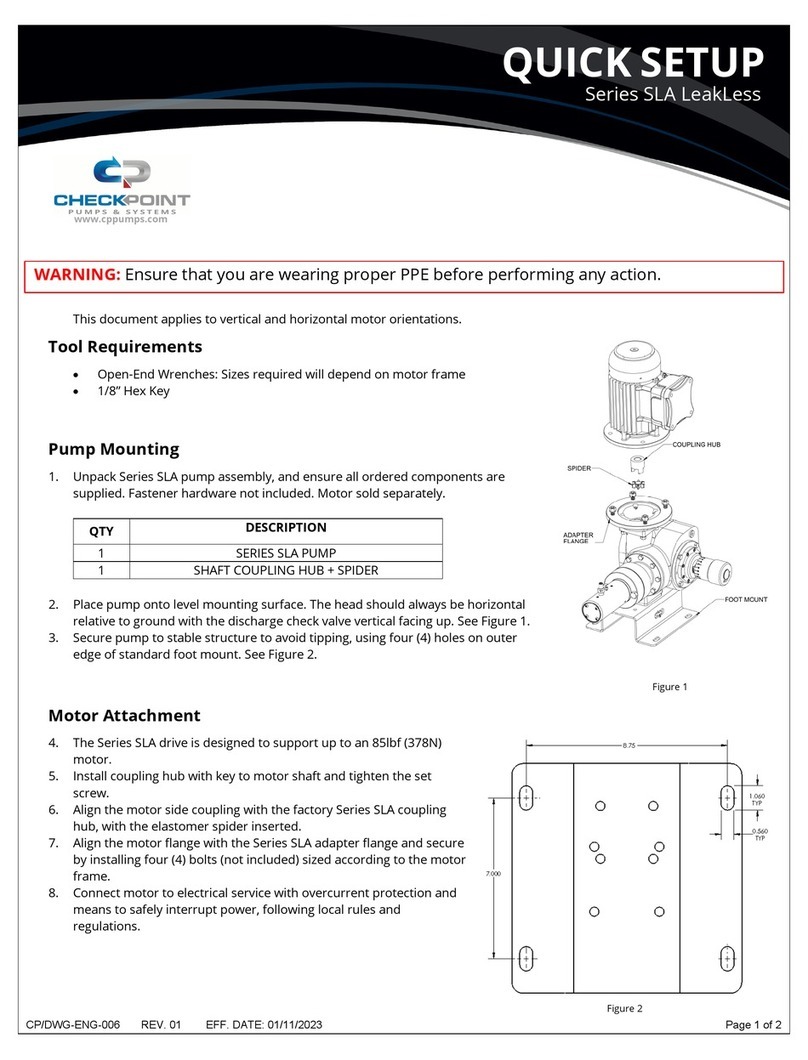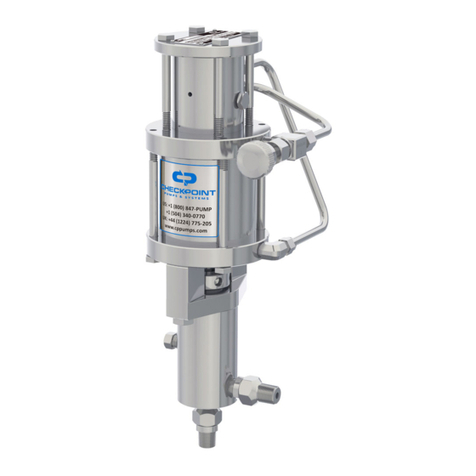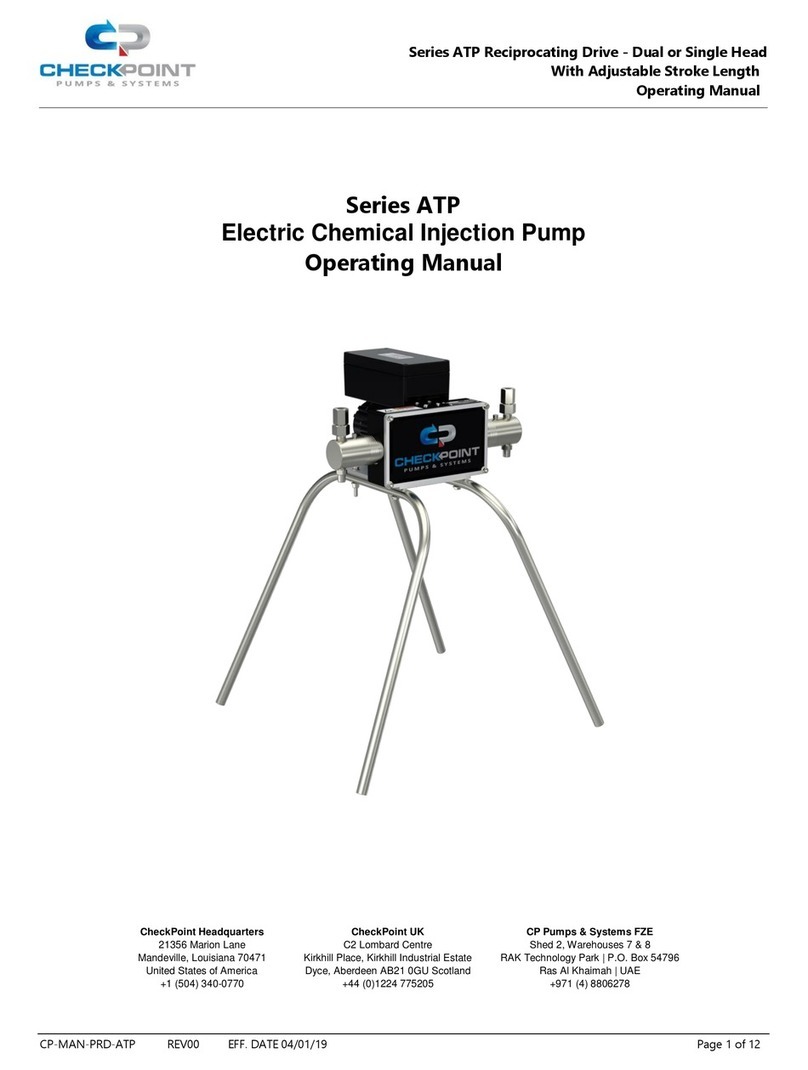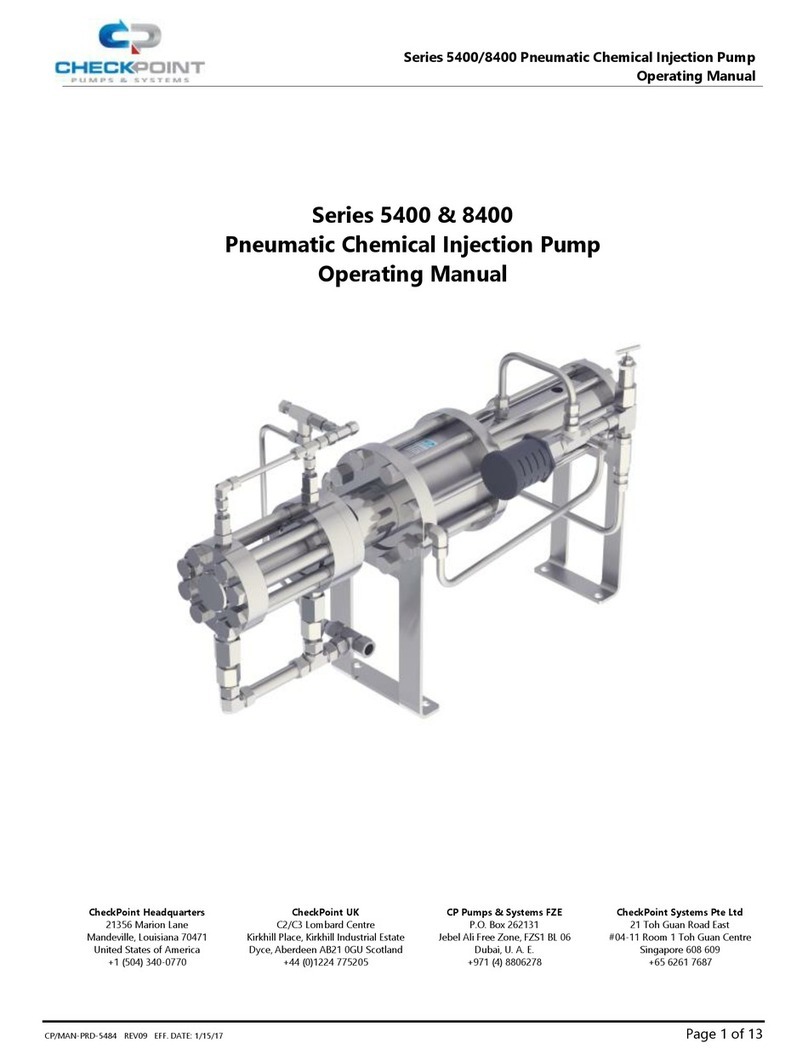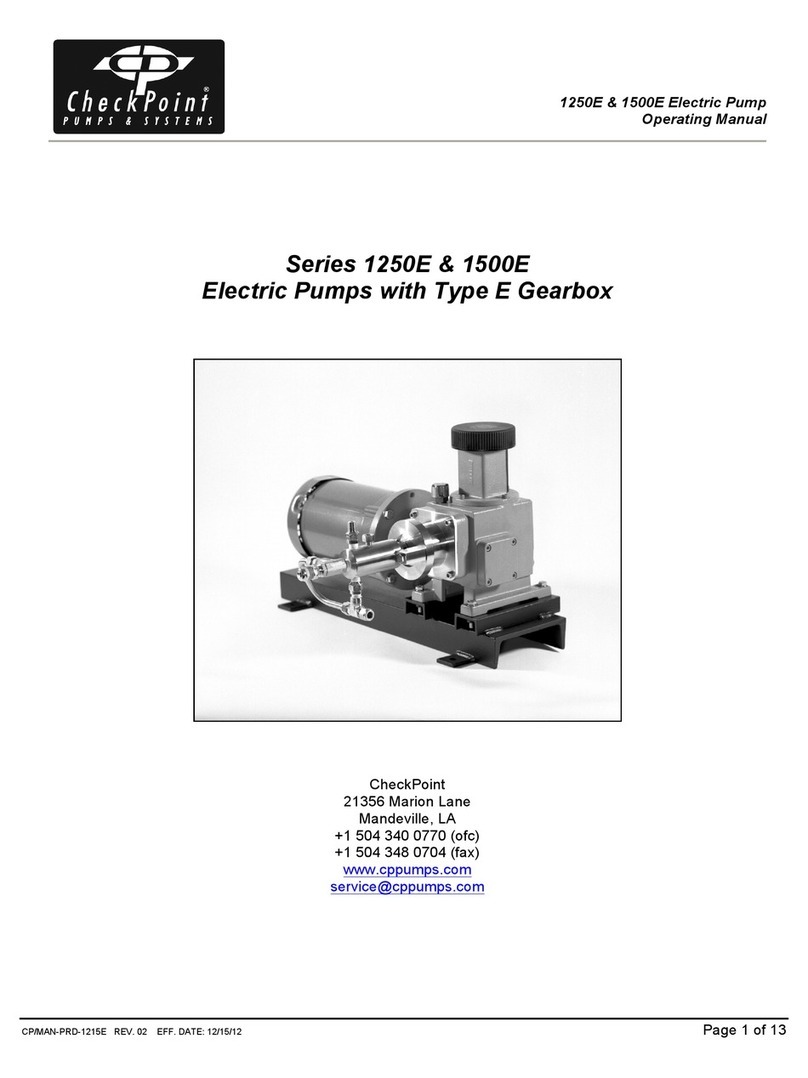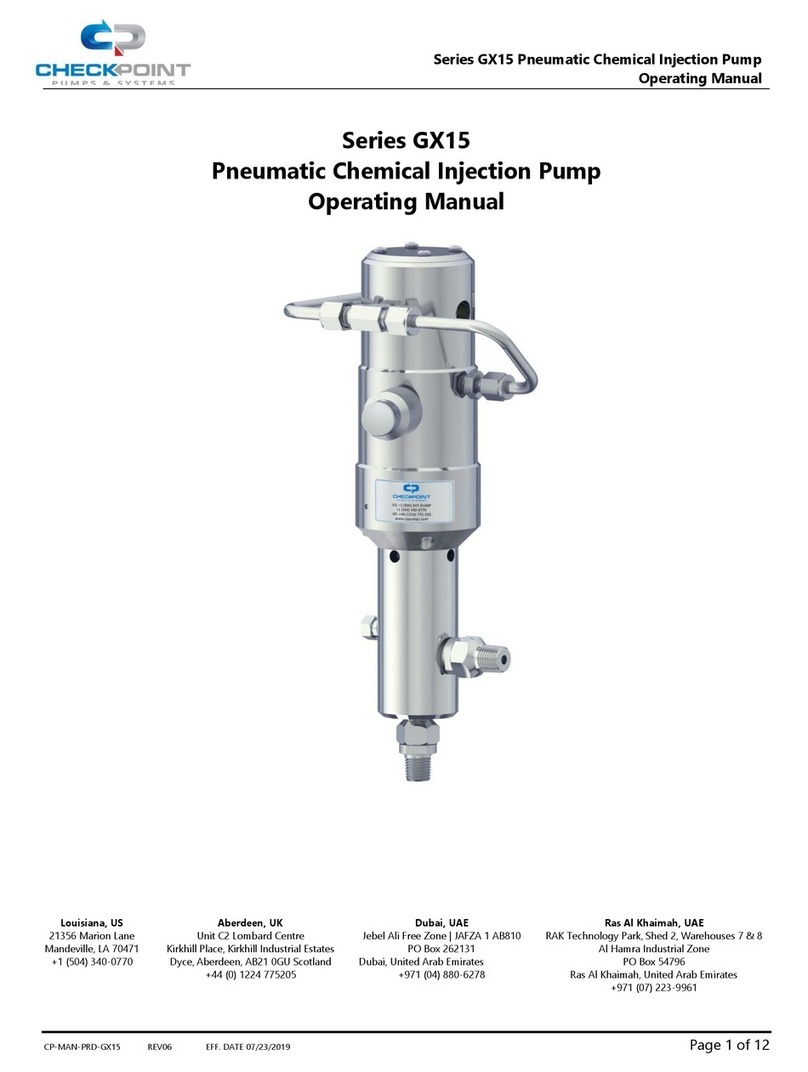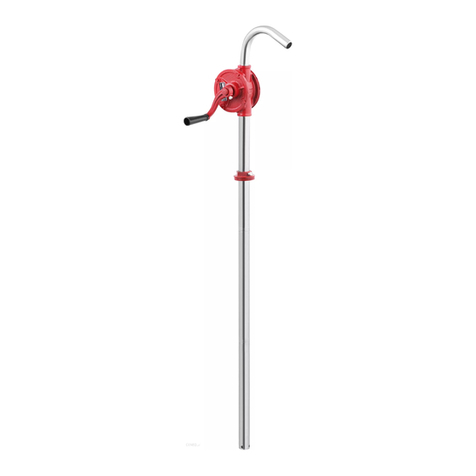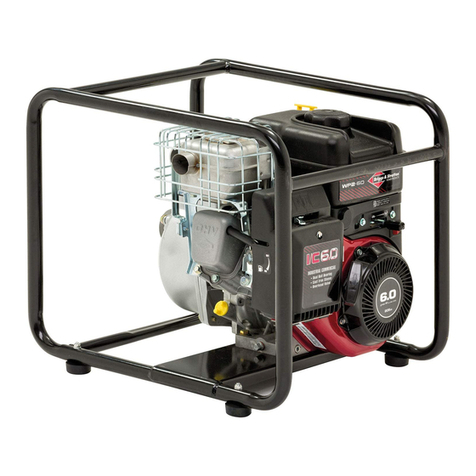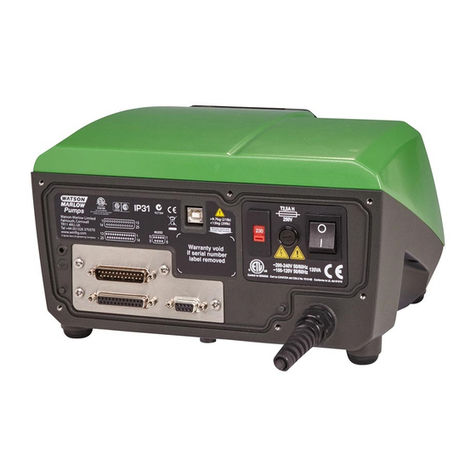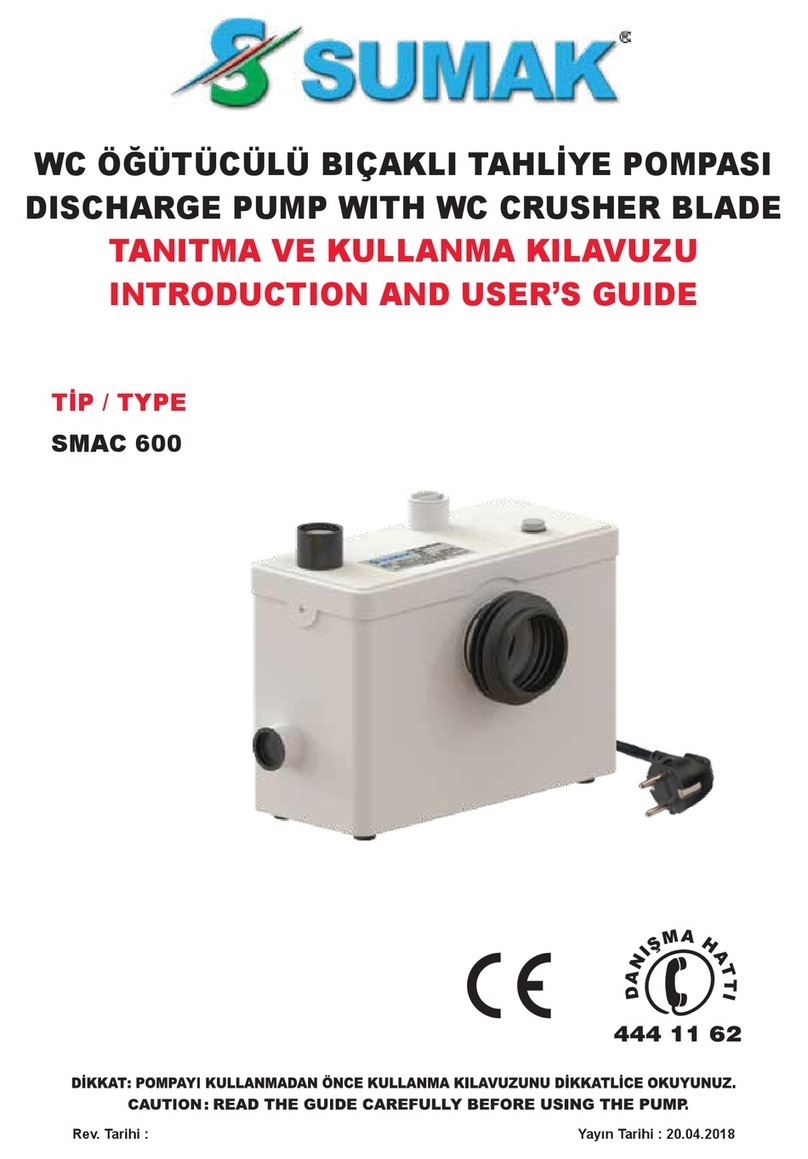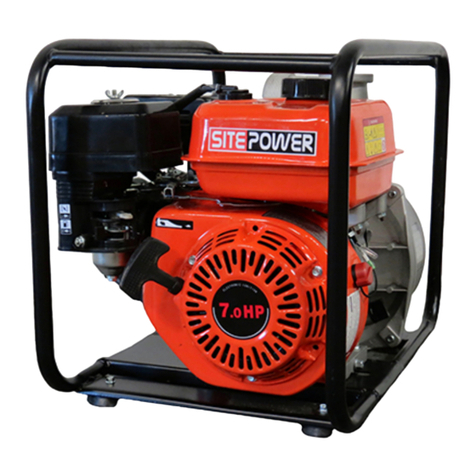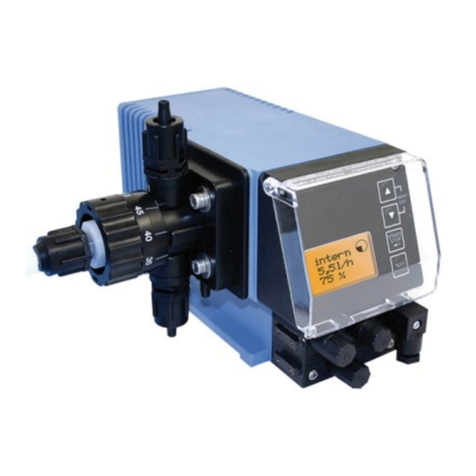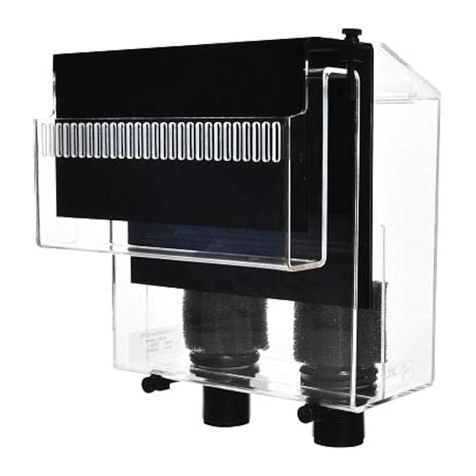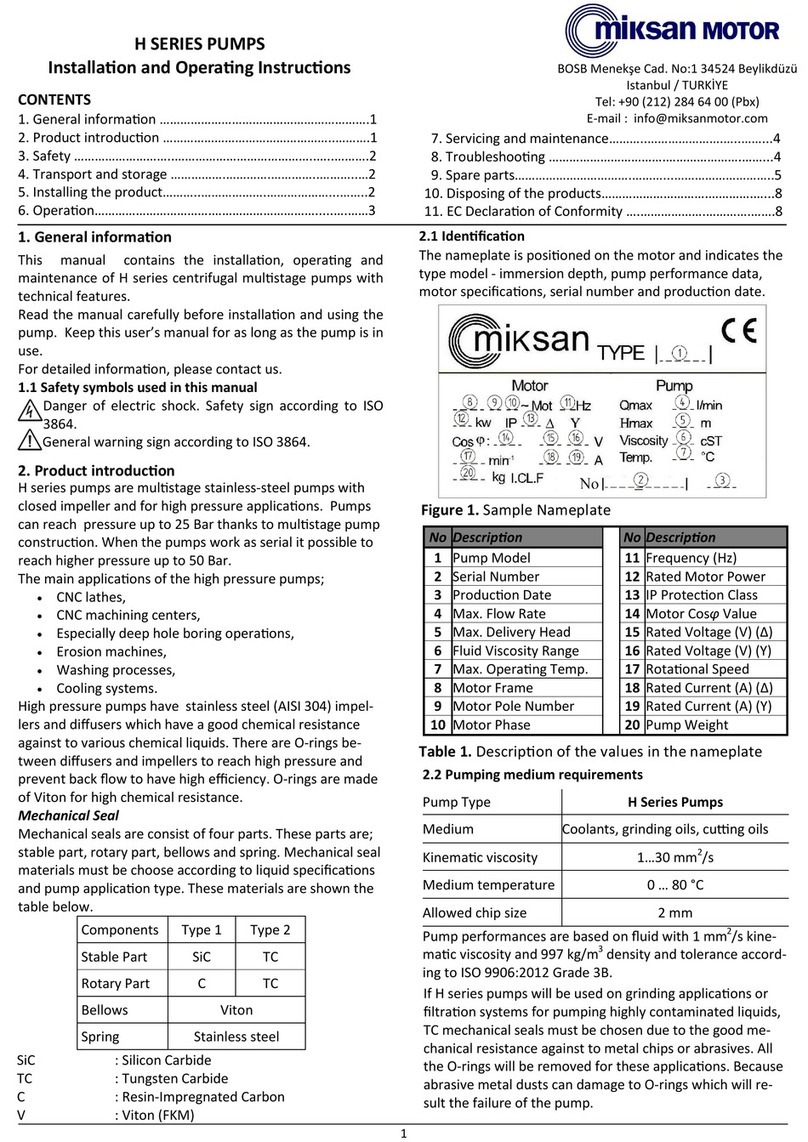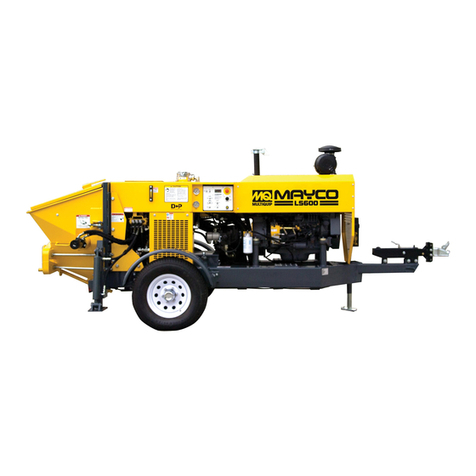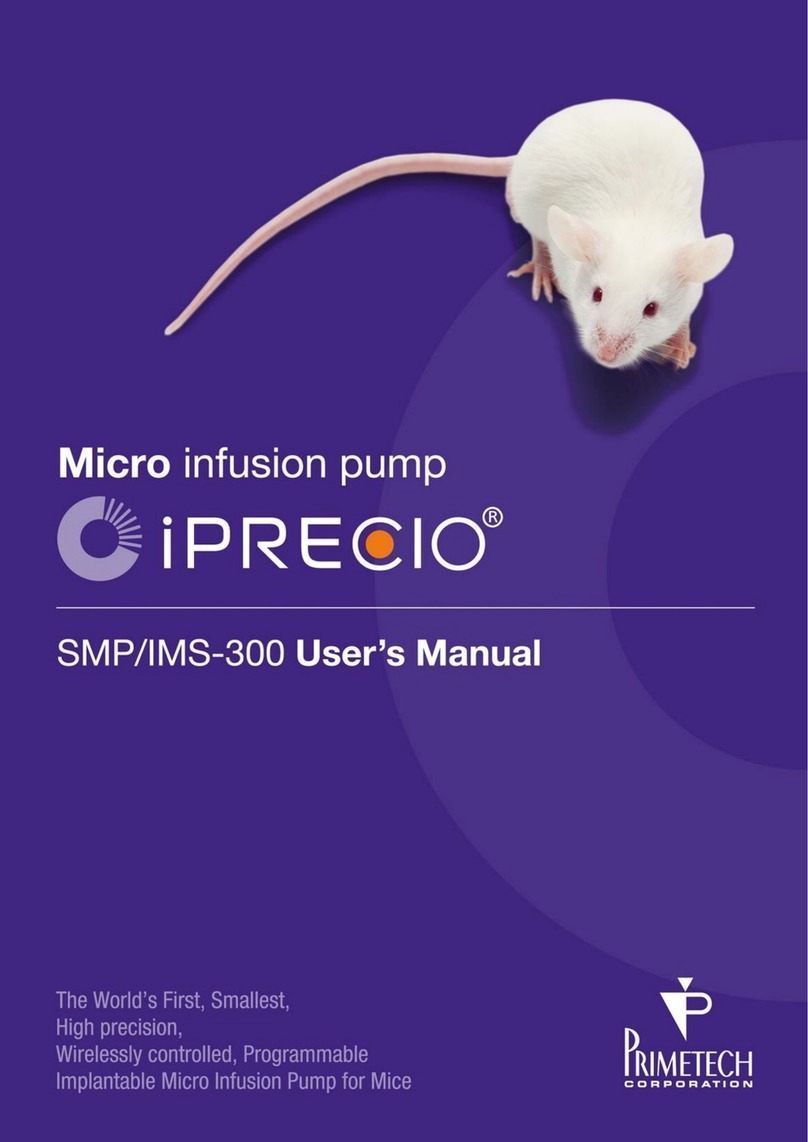and life of the pump in typical field or plant use. CheckPoint is available to answer your process questions or to help
design and build a package system utilizing components appropriate for your application.
NOTE: In Figure 1, the secondary chemical filter, vent line, and pressure regulator are optional under
certain conditions but are highly recommended.
1.1.3 CheckPoint recommends horizontal mounting for the Series 6200 model pumps where possible. However,
you may also mount the pump in other orientations, subject to the condition that the chemical head should be no
higher than level with the motor.
CAUTION: If the pump chemical head (“wet end”) is above the motor, gravity and plunger action will
eventually pull chemical into the pneumatic motor, causing damage to the motor and
atomizing chemical into the surrounding air.
1.1.4 Either a suction-side calibration gauge or a discharge flow meter are the only means through which you can
accurately set the flow rate of the pump. Many variables, including temperature, chemical viscosity, supply air
pressure, etceteras, preclude the use of tables, graphs, or formulas to determine the speed of the pump. Also,
without a calibration gauge or flow meter, it cannot be determined if the pump is primed and functioning normally.
For instructions on the proper use of a suction-side calibration gauge, please read section 3.1.1 Setting Pump Speed
Using a Calibration Gauge on page 8 for more information. The proper placement of a calibration gauge (labeled
#5) is shown in Figure 1. CheckPoint offers a complete range of accurate and durable calibration gauges and
discharge-side flow meters suitable for 6212 pump service.
NOTE: It is necessary to attach a vent tube to the top of all calibration gauges, chemical tanks, and tank
level gauges. The height of the top of each vent tube should always be greater than the highest
possible liquid level in the system, and the tube should have means to prevent water entry, such as
a 180 degree bend.
1.1.5 The Series 6200 does not require flooded suction or positive chemical pressure to prime, and can therefore
be mounted above the chemical container. For a chemical with average viscosity, the pump will pull air out of the
chemical line and prime from up to twelve feet above the liquid level in the tank. This feature is dependent upon
proper adherence to all points made in Paragraph 1.1.6 below.
1.1.6 ALL COMPONENTS AND PIPEWORK BETWEEN THE CHEMICAL TANK AND THE SUCTION CHECK VALVE OF
THE PUMP MUST BE 100% BUBBLE-TIGHT AND FULLY COMPATIBLE WITH THE CHEMICAL AND WITH EACH OTHER.
FAILURE TO ADHERE STRICTLY TO THIS DIRECTIVE WILL LEAD TO LOSS OF PRIME AND DAMAGE TO THE PLUNGER
SEAL AND PLUNGER. SPECIFICALLY:
1.1.6.1 Any fitting or screw-on joint without Teflon™ tape or other acceptable sealant may allow air at
atmospheric pressure to enter the suction tubing, even if no chemical leakage is visible.
1.1.6.2 Dissimilar metals in the suction side of the injection system may react with each other, creating gas
bubbles that will be carried into the pump head. All suction components, tubing, pipe, fittings, and valves must be
composed of similar metals. 316L SS, and Hastelloy C are the only metals CheckPoint uses in our packages for
suction side components. There are other acceptable choices; the key is that whatever metal is selected must be
used in the entire suction side of the system.
1.1.6.3 Incompatibility between the chemical and the components in the suction side of the injection system may
create gas bubbles that will be carried into the pump head. Some chemicals, for example, require Hastelloy™ or
PVC fittings and tubing, while other chemicals may only require 316 SS.













